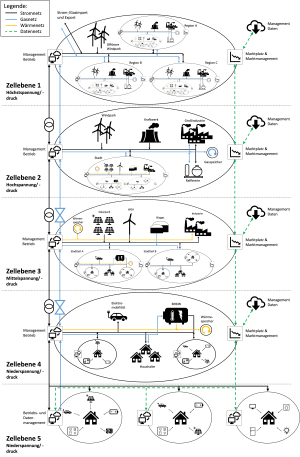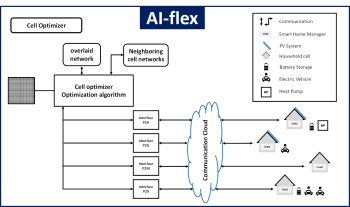- Home
- Hochschule
-
Studium
- Studienangebote
-
Beratung
- Studienorientierung
- Zentrale Studienberatung
- Studienfachberatung
- Psychosoziale Beratung
- Studienfinanzierungsberatung und Stipendien
- Schreibberatung
- Studieren mit beruflicher Qualifikation
- Studieren mit ausländischen Zeugnissen
- Studieren mit Handicap
- Studieren mit Familie
- Informationen für Schulen
- Auslandsaufenthalt
-
Bewerbung
- Auswahlgrenzen und Vergabeverfahren (NC)
- Bewerbungsportal
- Bewerbung Schritt für Schritt: Von der Bewerbung bis zur Einschreibung
- Bewerbung für ein höheres Fachsemester
- Bewerbung mit beruflicher Qualifikation
- Gasthörerschaft und Zweithörerschaft
- Kontakt Studierendenservice
- Losverfahren
- Promotion
- Sonderanträge
- Studiengang wählen
- Wer kann an der HSBI studieren?
- Studienstart
-
Studium organisieren
- Studierendenservice
- Abschlussunterlagen
- Anerkennung von Leistungen
- Anträge einreichen
- Beurlaubung
- CampusCard
- Einreichung schriftliche Arbeiten
- Erstattung
- Exmatrikulation
- IT-Services
- Online-Serviceportale (LSF/CAT)
- Prüfungsangelegenheiten: Ordnungen, Modulhandbücher
- Rücktritt von einer Modulprüfung
- Rückmeldung
- Semesterbeitrag
- Semesterticket (Studi-Deutschlandticket)
- Semester-, Vorlesungs- und Prüfungszeiten
- Studienbezogene Auslandserfahrung
- Studiengebühren
- Vorlesungsverzeichnis
- Rund ums Studium
- Fachbereiche
- Forschung
- Transfer
- Weiterbildung
- Internationales
- Karriere an der HSBI
More Flexibilities for the Power Grid - Kick-off Meeting of the AI-flex Research Project


The AI-flex project aims to develop an autonomous AI for cellular power systems with increasing flexibility through sector coupling and distributed storages. More and more so-called decentralized devices for power generation such as photovoltaic systems, storage systems as well as various consumers with different loads are connected to the grid at the lower voltage levels: This puts a strain on the power grid due to fluctuations in generation and consumption. The international research project "AI-flex" initiated by Bielefeld University of Applied Sciences is investigating how these fluctuations can be balanced locally and beyond the electricity sector. The idea: the energy system is divided into decentralized energy cells managed by an AI.

AI-flex is based on the understanding that the share of renewables in energy systems must be increased in order to decarbonize all energy sectors and combat climate change. The development of a European cellular energy system with numerous decentralized renewable energy generation, storage and consumption facilities is a promising approach to achieve this goal.
Managing energy cells at all hierarchical levels. In this context, each cell can comprise electricity, gas and district heating networks that achieve high efficiency and flexibility through sector coupling and energy storage solutions such as batteries and power-to-X systems (X: gas/heat/mobility). Each energy cell has an autonomous cell optimizer. Due to sector coupling, this system is characterized by high flexibility with regard to the share of renewable energies as well as high supply security. Although the first energy cells already exist in Germany, their focus is primarily on maximizing the self-consumption of renewable energy generation. A true energy cell system, in which the cells negotiate their energy exchange in a predefined time frame, does not yet exist.

In AI-flex, such an energy cell system is to be developed and investigated: For an autonomous cellular energy system design, generation, storage, sector coupling, and consumption of all devices need to be monitored and controlled jointly by utilities. In addition to monitoring and evaluating the numerous operating variables of the devices, user behavior and weather-dependent forecasts of energy surpluses or shortages within the cell and neighboring cells must be continuously evaluated. Since there is currently no adequate control method for the multitude of devices and restrictions, a powerful AI cell optimizer is being developed in AI-flex.

This concrete idea is being tackled by the German-Austrian research alliance consisting of the Bielefeld University of Applied Sciences with the Grids and Energy Systems working group, the TU Kaiserslautern from the Department of Automation Technology, the TU Vienna with the Institute of Computer Technology, the Austrian Institute of Technology (AIT), and the industrial partners Voltaris and Stadtwerke Bielefeld. The research institutions focus primarily on the development and subsequent validation in test laboratories of suitable autonomous controllers for P2X technologies and battery storage systems to be used in European cellular energy systems in the future. After successful development of the controllers, the industry partners will focus on successful implementation in the power grid in the form of field tests that are intended to provide final verification of the system. On the other hand, they are developing innovative business models to round off the transfer.
At the two-day kick-off meeting on September 21 and 22 in Bielefeld, the focus was on the exchange between all participating international project partners. After an ice-breaker to get to know each other at the beginning of the event, the participants already had lively discussions about the contents and the upcoming tasks of the project. The first results of the research project, which started in June of this year, were also discussed. The kick-off event was a successful start into the concrete tasks of the project for all project partners.
Further information:
